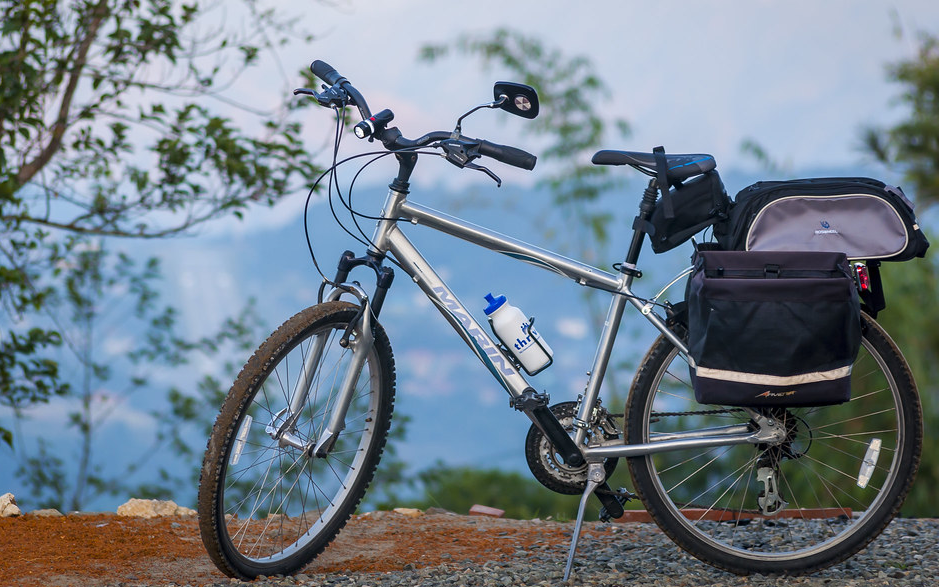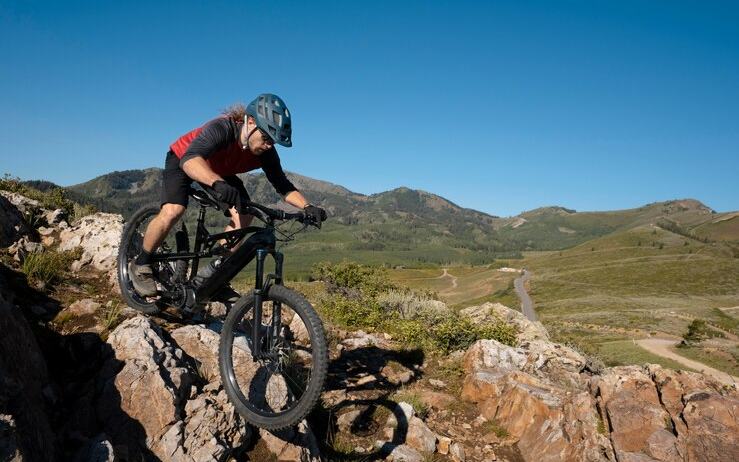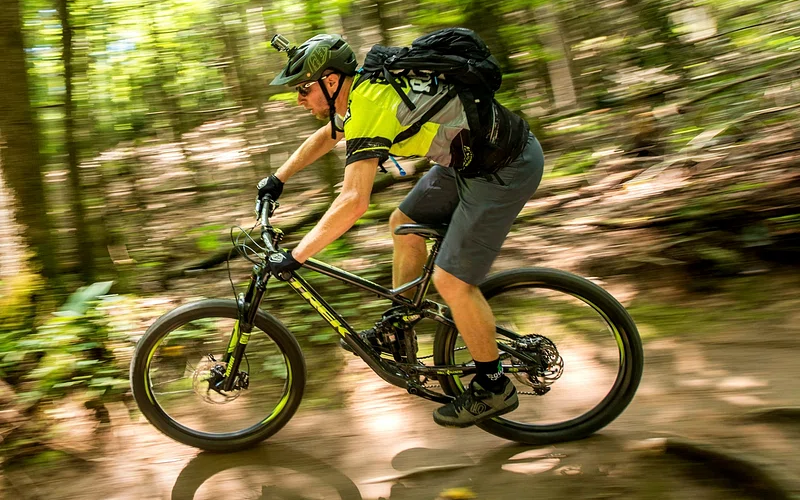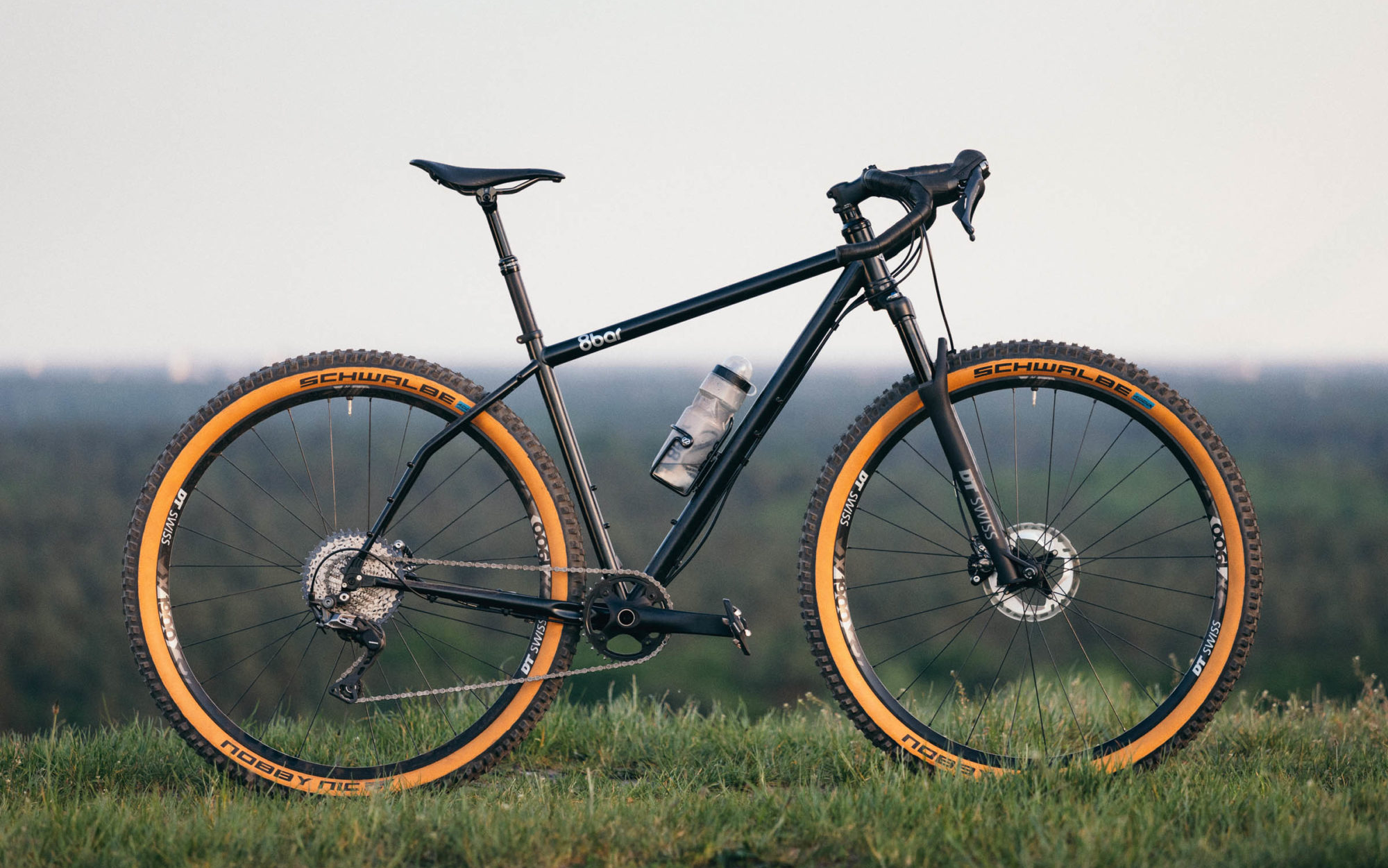Deciding between a hybrid or mountain bike is crucial for your cycling experience. This hybrid bike vs mountain bike comparison explores their unique characteristics, helping you in selecting the ideal option for your adventures.
Hybrid bikes and mountain bikes each have their own set of advantages and limitations, catering to different preferences and riding styles. From terrain suitability to handling and performance, there are several factors to consider before making your choice.
Hybrid bikes blend road and mountain bike features, perfect for city and leisure rides. Meanwhile, mountain bikes excel on challenging trails, tackling rugged terrains with ease.
The debate on hybrid bikes vs. mountain bikes isn’t solely about their respective speeds or capabilities; it’s about finding the perfect match between rider and machine. So, let’s help you find your perfect match!
What Is a Hybrid Bike?
A hybrid bicycle, as its name implies, merges the characteristics of both road and mountain bikes, providing adaptability for different terrains and riding conditions. These bikes typically feature a more upright riding position compared to road bikes, making them comfortable for commuting, leisure riding, and light off-road trails.

Key Features of Hybrid Bikes
- Frame: Hybrid bikes typically have a lightweight frame constructed from aluminum or steel, providing durability and agility.
- Tires: These bikes are equipped with medium-width tires, offering a balance between the efficiency of road bike tires and the traction of mountain bike tires.
- Handlebars: Hybrid bikes usually have flat handlebars, promoting an upright riding position for enhanced comfort and visibility.
- Gearing: Hybrid bikes come with a wide range of gears, suitable for various terrains, from smooth pavement to gravel paths.
Hybrid Bike Gearing
Hybrid bikes employ a range of gearing systems to accommodate different riding styles and terrains. Common gearing options include:
- Traditional Derailleur Gears: These systems offer a wide range of gear ratios, allowing riders to tackle both uphill climbs and fast descents efficiently.
- Internal Hub Gears: Some hybrid bikes feature internal hub gearing, which provides a cleaner aesthetic and requires less maintenance than traditional derailleur systems.
Hybrid Bike Brakes
Hybrid bikes boast diverse braking systems:
- Rim brakes: These include traditional calipers and potent linear pull (V-brakes).
- Disc brakes: Available in mechanical and hydraulic variants, they grant superior modulation and power, with hydraulic ones leading in performance.
- Mechanical discs: Offer easier maintenance compared to hydraulic systems.
- Integrated brake-shift systems: Seamlessly control both functions.
When selecting, prioritize factors such as performance, weather durability, and maintenance requirements. Rim brakes, while lighter and cheaper, might suffer in wet conditions, whereas disc brakes excel. Choose according to your riding needs and preferences.
Pros & Cons
| Pros | Cons |
|---|---|
| Suitable for various terrains and riding conditions | Limited off-road capability |
| Comfortable upright riding position and padded saddles for longer rides | Slightly heavier than road bikes |
| Equipped with features such as fender and rack mounts for commuting and cargo carrying for convenience | Not specialized for specific disciplines |
What Is a Mountain Bike?
A mountain bike is a specialized bicycle designed for off-road riding on rough terrain such as dirt trails, rocky paths, and mountainous terrain.

Key Features
- Suspension: Mountain bikes are equipped with front forks and/or rear shocks, which serve to absorb bumps, thereby providing a smoother and more controlled riding experience on rugged terrain.
- Knobby Tires: Wide, knobby tires offer enhanced traction on varied surfaces, providing stability and control off-road.
- Wide Handlebars: Wide handlebars provide better control and leverage for navigating obstacles and maintaining stability on uneven terrain.
- Disc Brakes: Mountain bikes use disc brakes for superior stopping power, especially in wet conditions, ensuring safety during descents.
MTB Gearing
Mountain bikes boast a wide range of gearing options, allowing riders to conquer both ascents and descents with ease. Common gearing systems include:
- Single-Speed: Ideal for simplicity and low maintenance, single-speed mountain bikes have a single-gear ratio and are suitable for relatively flat terrain.
- Multiple Gears: Most modern mountain bikes are equipped with multiple gears, ranging from 7 to 12 speeds. These gears enable riders to adjust their pedaling resistance according to the steepness of the terrain.
MTB Brakes
Braking systems on mountain bikes play a crucial role in ensuring rider safety and control, especially on challenging trails. Two primary types of brakes found on MTBs are:
- Disc Brakes: Offering reliable stopping power in all conditions, disc brakes are commonly found on mountain bikes. They come in two variants: hydraulic and mechanical, each with its own set of advantages.
- Rim Brakes: While less common on modern mountain bikes, rim brakes utilize pads that grip the wheel rims to slow down the bike. They are lightweight and easy to maintain but may lack the stopping power of disc brakes, particularly in wet or muddy conditions.
Pros & Cons
| Pros | Cons |
|---|---|
| Designed for diverse surfaces like dirt trails and rocky paths | Tends to be heavier due to sturdy construction |
| Built to withstand rugged conditions | Less efficient on smooth roads |
| Offers comfort and control on rough terrain | Less suitable for long-distance riding |
What Is Difference between Hybrid and Mountain Bike?
Frame
When comparing a hybrid vs mountain bike, the difference lies primarily in their frames. Hybrid bikes blend road and mountain bike features, offering versatility. Their frames, often made of lightweight aluminum or carbon fiber, prioritize comfort and efficiency.

In contrast, mountain bikes prioritize durability and stability for rugged terrains, using sturdy materials like steel or aluminum alloy. While hybrid bikes are generally lighter, making them suitable for fitness enthusiasts seeking speed and comfort, mountain bikes’ heavier frames provide resilience on rough trails.
Hybrid bikes suit urban environments and light trails, while mountain bikes excel in off-road conditions. Ultimately, the difference between hybrid bike & mountain bike (MTB) varies significantly in construction and performance, offering distinct advantages for different riding needs.
Tire
When comparing mountain vs hybrid bike, it’s crucial to analyze their tire characteristics comprehensively. The difference in tire design significantly influences traction, maneuverability, and overall comfort based on the chosen terrain and riding preferences.

Hybrid bikes typically feature tires that strike a balance between road and mountain bike standards. With a moderate tire size, tread pattern, and width, hybrid bike tires offer versatility across various terrains. They’re designed to provide adequate traction on both paved surfaces and light trails or gravel paths.
Meanwhile, mountain bikes are equipped with wider tires, boasting an aggressive tread pattern optimized for superior traction and control on rough, uneven terrain. These tires are larger in diameter compared to those found on hybrid bikes, enhancing stability and shock absorption.
It’s evident that mountain bikes prioritize off-road performance, while hybrid bikes cater to a broader range of surfaces, including paved roads and light trails.
Suspension
Hybrid bikes typically come with rigid forks or may feature front suspension forks, whereas mountain bikes commonly offer front suspension or full suspension setups.
- Rigid forks provide simplicity and efficiency, ideal for smooth roads and light trails, but lack shock absorption on rough terrain.
- Front suspension absorbs impact from bumps, enhancing comfort and control on uneven surfaces.
- Full suspension systems, found in mountain bikes, incorporate both front and rear shock absorbers, offering superior cushioning and traction, especially on rugged trails, albeit at a higher weight and cost.
When deciding between hybrid bike vs mountain bike, you must bear in mind that the former prioritizes versatility and efficiency, while mountain bikes excel in rough terrain performance with their advanced suspension setups.
Riding Position
When comparing a mountain bike vs hybrid, the riding position plays a crucial role in determining comfort and performance. Choosing between both depends on your riding style and preferences.

Hybrid bikes typically offer a more upright riding position, suitable for leisurely rides and commuting. This posture reduces strain on the back and neck, enhancing comfort during long rides.
On the other hand, mountain bikes feature a more aggressive riding position, with a forward-leaning posture for better control and maneuverability on rugged terrains. While hybrid bikes prioritize comfort over speed, mountain bikes excel in handling rough trails efficiently.
Weight
Weight plays a crucial role in determining the bike’s performance and versatility, including hybrid vs mountain bike speed.
Hybrid bikes are designed to strike a balance between the agility of road bikes and the robustness of mountain bikes, resulting in a moderate weight that suits various terrains and contributes to their faster speed on smoother surfaces.
Contrarily, mountain bikes tend to be heavier due to their sturdy frame and components, which may slightly hinder their speed on flat terrain but provide the stability and control necessary for tackling rough trails.
In the hybrid bike vs mountain bike weight comparison, hybrid bikes generally weigh less, offering easier maneuverability on urban streets and light trails. However, mountain bikes’ heavier weight ensures stability and durability on challenging terrain.
Thus, while weight impacts both hybrid and mountain bikes’ speed, each excels in different riding environments.
Terrain Suitability
Hybrid bikes are versatile and suitable for urban commuting, paved roads, gravel paths, and light trails. However, mountain bikes excel on rough terrains like mountains and rugged trails due to their sturdy construction and suspension systems.

For urban commuting and smooth rides, hybrid bikes are preferred due to their agility and comfort, while mountain bikes offer superior performance on challenging terrains.
When deciding between hybrid and mountain bikes, consider the terrain you’ll encounter most frequently to ensure the best riding experience.
Hybrid Bike vs. Mountain Bike Comparison: Which Is Right for You?
When comparing a mountain bike vs hybrid bike, riders must carefully consider terrain, weight, fitness goals, budget, and intended usage. Hybrid bikes blend features of road and mountain bikes, offering versatility across various terrains. Mountain bikes, designed for rugged off-road trails, boast sturdy frames and wide tires.

Though hybrids are typically lighter, mountain bikes provide superior stability on rough terrain. Both options cater to fitness needs, with hybrids ideal for leisure rides and commutes and mountain bikes offering intense workouts on challenging trails.
When deciding between a hybrid or mountain bike for fitness, it’s essential to consider factors such as your preferred terrain, riding style, and fitness goals. Moreover, if you are looking for a hybrid or mountain bike for child, you must prioritize size, weight, and ease of handling for a safe ride.
Prioritizing comfort, performance, and suitability for your riding environment is crucial. Whether you opt for a mountain bike or hybrid bike, choosing the appropriate option ensures an enjoyable and fulfilling cycling experience tailored to your preferences and requirements.
Conclusion
To fully comprehend what is a hybrid bike vs mountain bike comparison, it’s crucial to understand their unique attributes. Test riding both types of bikes can also help you determine which feels more comfortable and suits your riding style best.
If you primarily ride on paved roads or smooth trails, a hybrid bike may offer a more comfortable and efficient riding experience due to its lighter weight and narrower tires. On the other hand, if you frequently tackle rough terrain, steep hills or enjoy off-road adventures, a mountain bike’s durability, suspension system, and wider tires provide better stability and control.
Ultimately, the choice between a hybrid bike vs mountain bike vs road bike depends on factors such as terrain preference, riding style, and intended usage.
FAQs
Hybrid bikes offer comfort with upright riding position, while mountain bikes prioritize off-road performance.
Yes, hybrid bikes are suitable for long rides due to their versatility and comfortable design.
Hybrid bikes excel for daily commuting, errands, and recreational rides, offering versatility and comfort.
Hybrid bikes typically offer faster rides on roads, while mountain bikes excel on rough terrains and trails.



